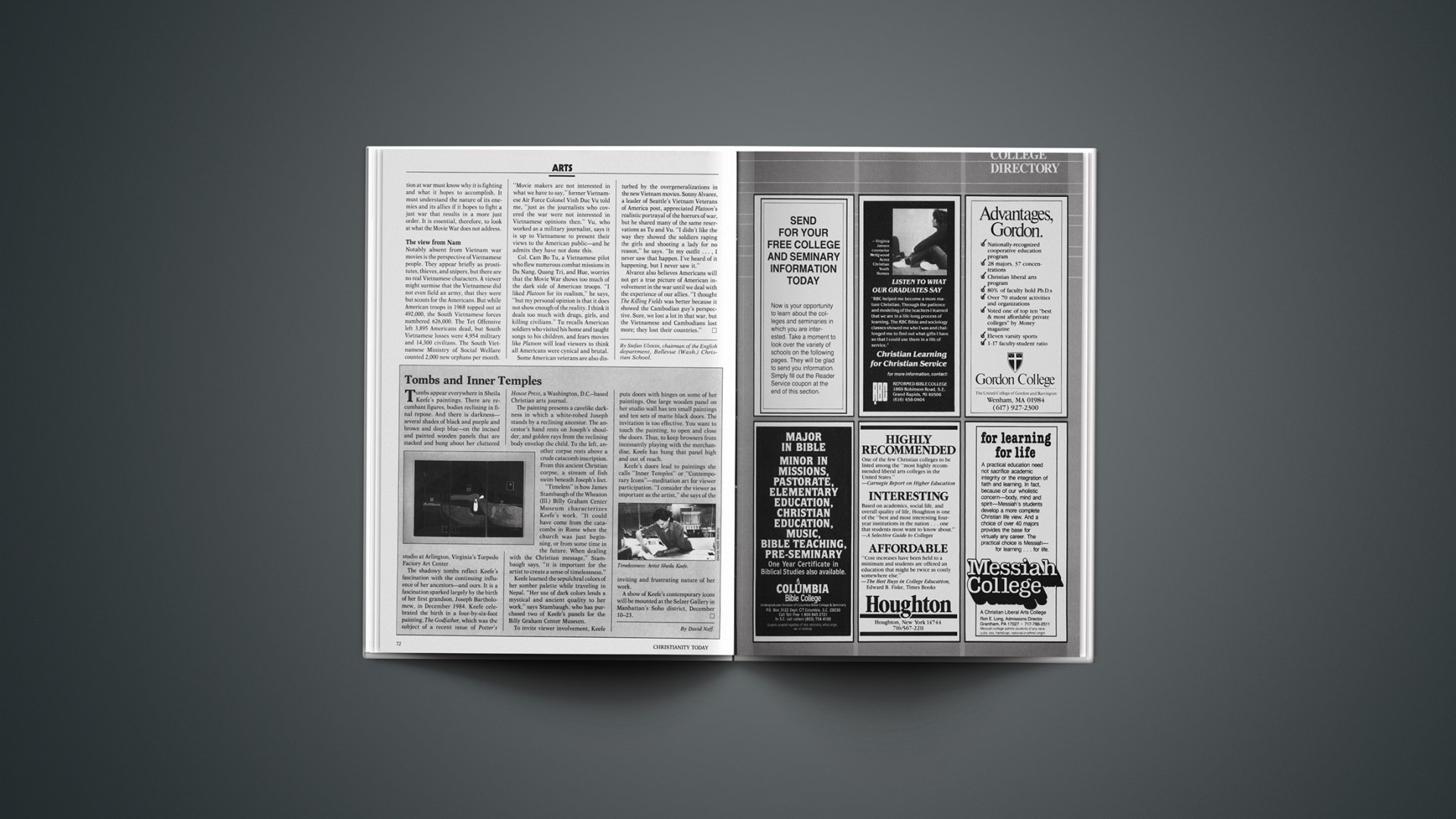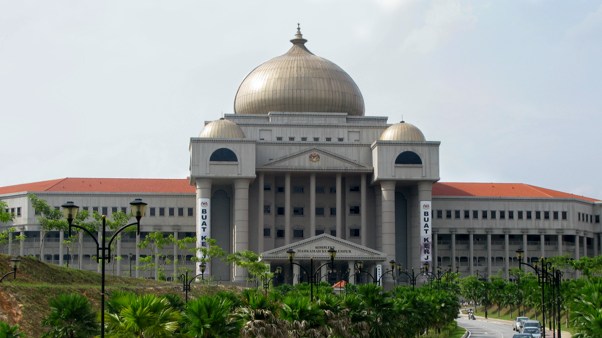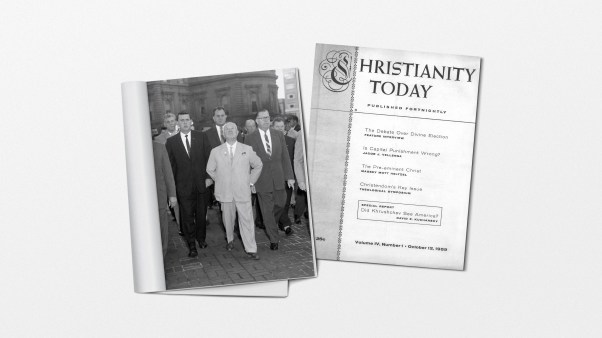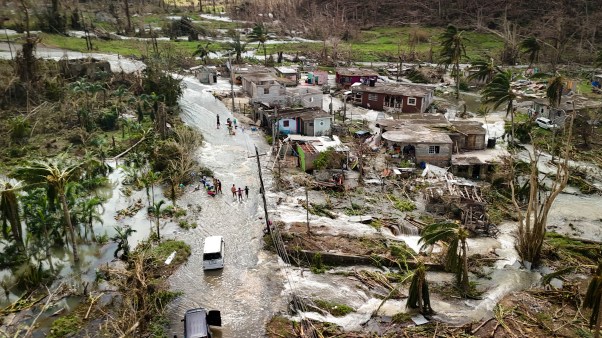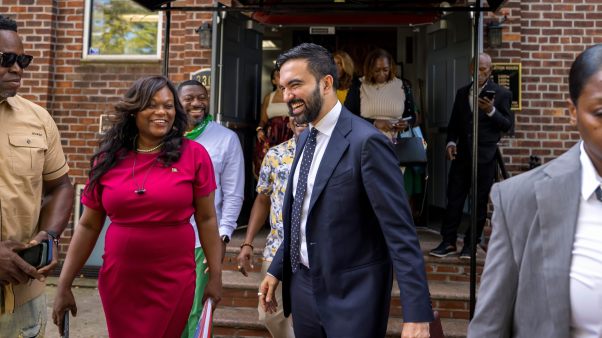Tombs appear everywhere in Sheila Keefe’s paintings. There are recumbant figures, bodies reclining in final repose. And there is darkness—several shades of black and purple and brown and deep blue—on the incised and painted wooden panels that are stacked and hung about her cluttered studio at Arlington, Virginia’s Torpedo Factory Art Center.
The shadowy tombs reflect Keefe’s fascination with the continuing influence of her ancestors—and ours. It is a fascination sparked largely by the birth of her first grandson, Joseph Bartholomew, in December 1984. Keefe celebrated the birth in a four-by-six-foot painting, The Godfather, which was the subject of a recent issue of Potter’s House Press, a Washington, D.C. based Christian arts journal.
The painting presents a cavelike darkness in which a white-robed Joseph stands by a reclining ancestor. The ancestor’s hand rests on Joseph’s shoulder, and golden rays from the reclining body envelop the child. To the left, another corpse rests above a crude catacomb inscription. From this ancient Christian corpse, a stream of fish swim beneath Joseph’s feet.
“Timeless” is how James Stambaugh of the Wheaton (Ill.) Billy Graham Center Museum characterizes Keefe’s work. “It could have come from the catacombs in Rome when the church was just beginning, or from some time in the future. When dealing Christian message,” Stambaugh says, “it is important for the artist to create a sense of timelessness.”
Keefe learned the sepulchral colors of her somber palette while traveling in Nepal. “Her use of dark colors lends a mystical and ancient quality to her work,” says Stambaugh, who has purchased two of Keefe’s panels for the Billy Graham Center Museum.
To invite viewer involvement, Keefe puts doors with hinges on some of her paintings. One large wooden panel on her studio wall has ten small paintings and ten sets of matte black doors. The invitation is too effective. You want to touch the painting, to open and close the doors. Thus, to keep browsers from incessantly playing with the merchandise, Keefe has hung that panel high and out of reach.
Keefe’s doors lead to paintings she calls “Inner Temples” or “Contemporary Icons”—meditation art for viewer participation. “I consider the viewer as important as the artist,” she says of the inviting and frustrating nature of her work.
A show of Keefe’s contemporary icons will be mounted at the Selzer Gallery in Manhattan’s Soho district, December 10–23.
By David Neff.

